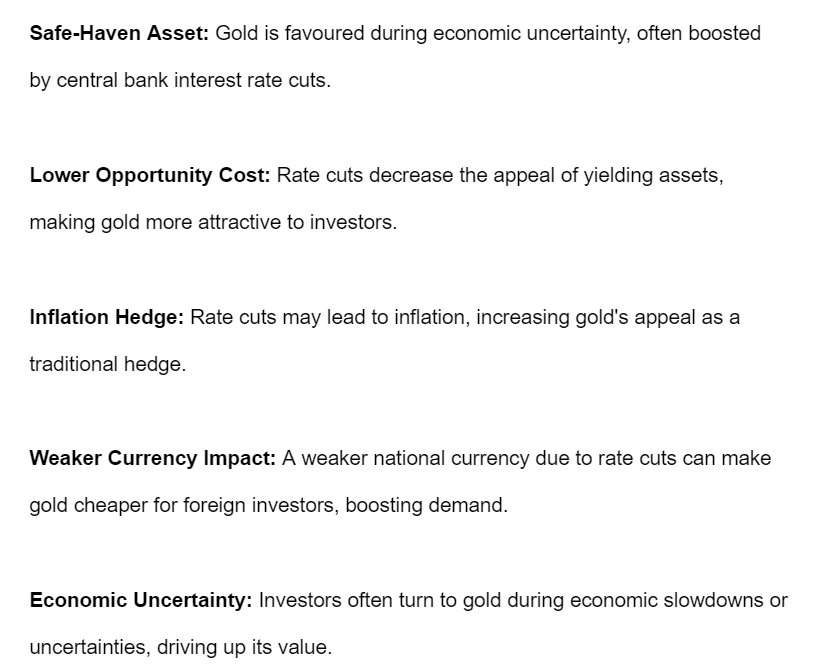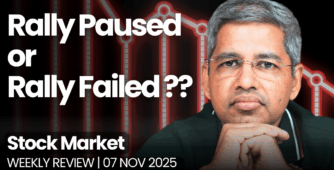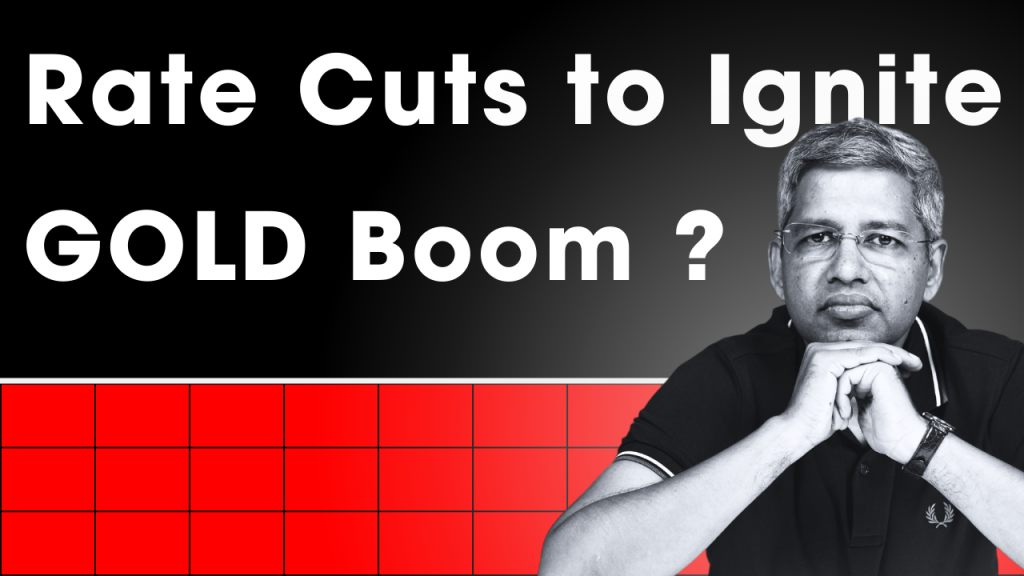
Hello and welcome to the Weekend Investing Daily Bite of August 26th, and what a day it was! Nifty surged by a couple of hundred points, reclaiming the 25,000 mark. The markets now seem content with the expectation that rate cuts are on the horizon, with half a percent cut almost baked in, potentially more by mid-September. We’ll find out soon. The market continues to move forward, but it’s important to note that historically, rate cuts haven’t been great for the markets in the long run. After a quarter or two post the start of a rate cut cycle, there might be a lag where markets could top out for some time. This has been the case in the past.
Market Overview
So, where are the markets headed? Today, Nifty crossed the 25,000 barrier, briefly touching 25,043 before settling back near 25,000. This level, much like when Sachin Tendulkar or Sunil Gavaskar approached their century, brings some nervousness, and today was another such day near 25,000. But I believe we’re almost there. We approached this milestone at the beginning of August, experienced a sharp fall, and now we’ve recovered in less than a month. I think we’re all set to go higher, so no complaints about Nifty being up by 0.76%.
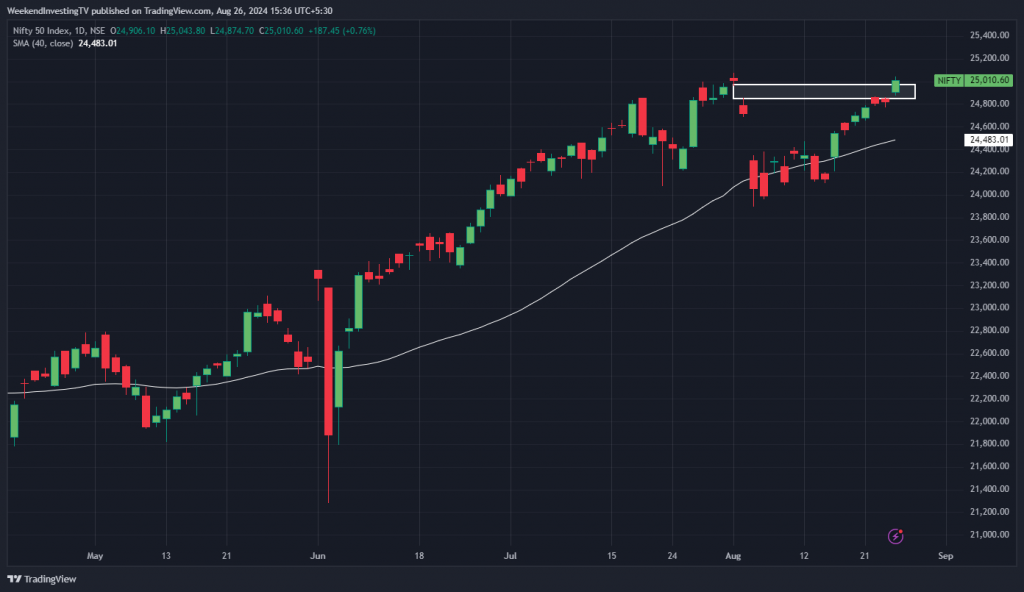
Nifty Next 50
Nifty Junior, on the other hand, was flat today. It opened slightly higher and stayed up by half a percent throughout the day. It’s just at the cusp of making another move, possibly waiting along with Nifty.
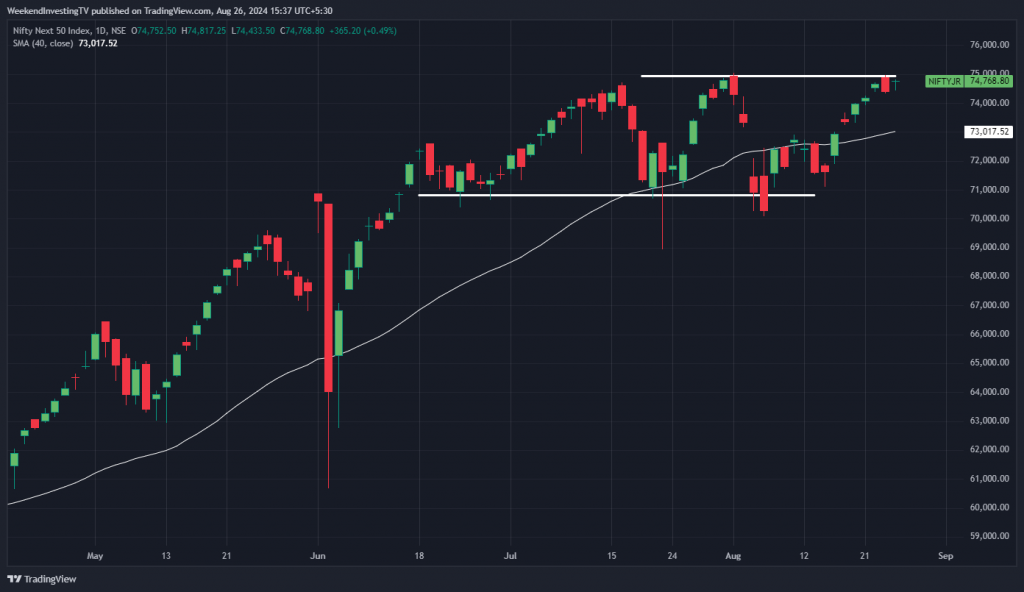
Nifty Mid and Small Cap
Mid-caps showed a similar pattern to the Junior, completely flat after a slight gap-up at the open. The previous day’s bearish engulfing candle didn’t follow through, and combined with Friday’s candle, I think the bulls will have the upper hand. Mid-caps closed up by 0.52%.
Small-caps gapped up to a new high, couldn’t sustain it, but still managed to close at a new all-time high with a 0.41% gain. It seems that small-caps are now leading this rally.
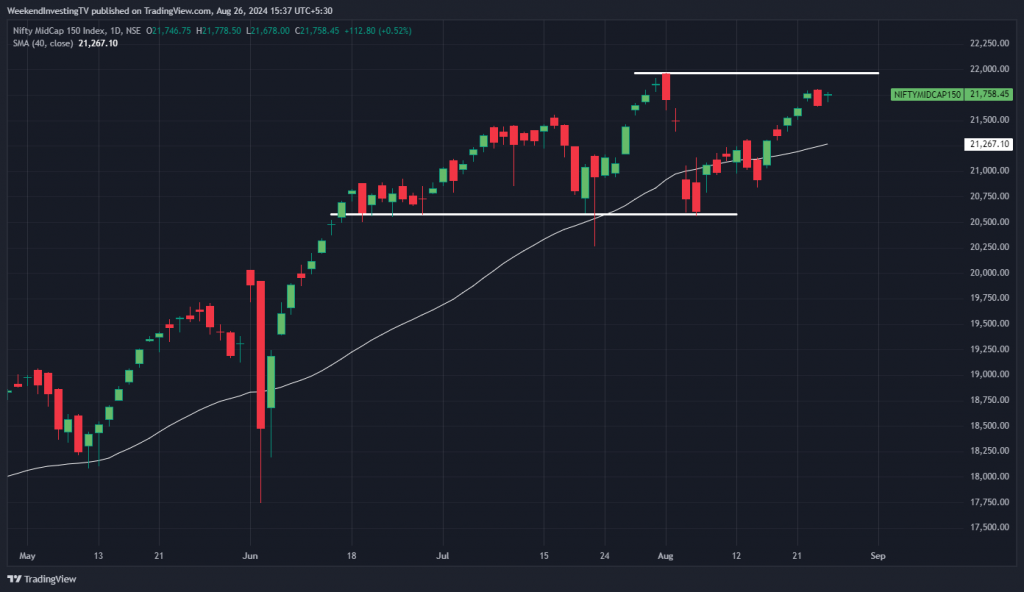
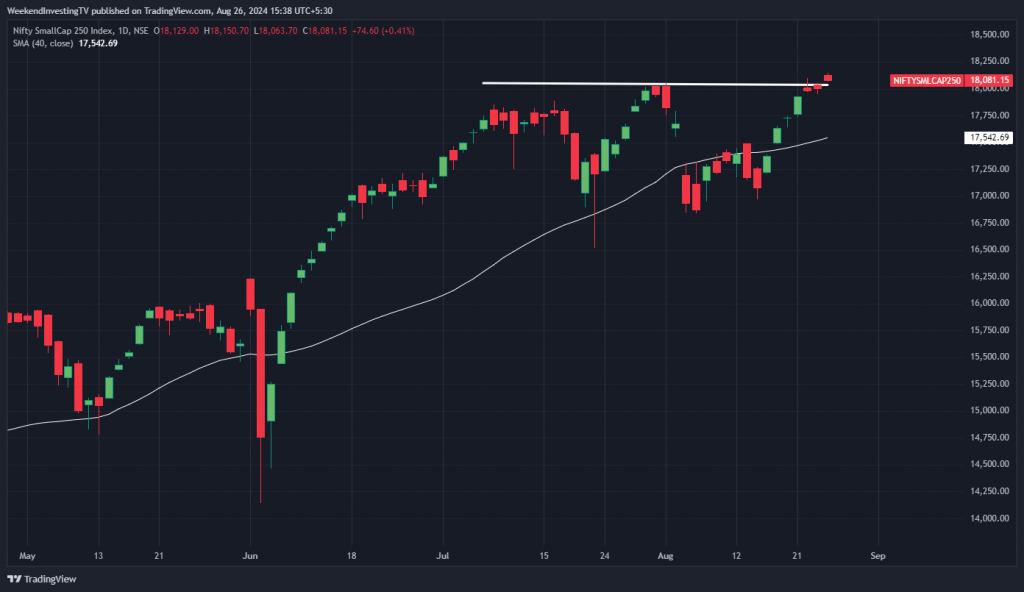
Nifty Bank Overview
Bank Nifty attempted to break out of the 51,150 mark, but gave up most of its gains towards the end, inching up by 0.42%. Simple moving averages are moving up on the 5100 and 200-day averages, while the 20-day moving average is dropping slightly, indicating no strong trend direction at the moment, but there’s hope for improvement.
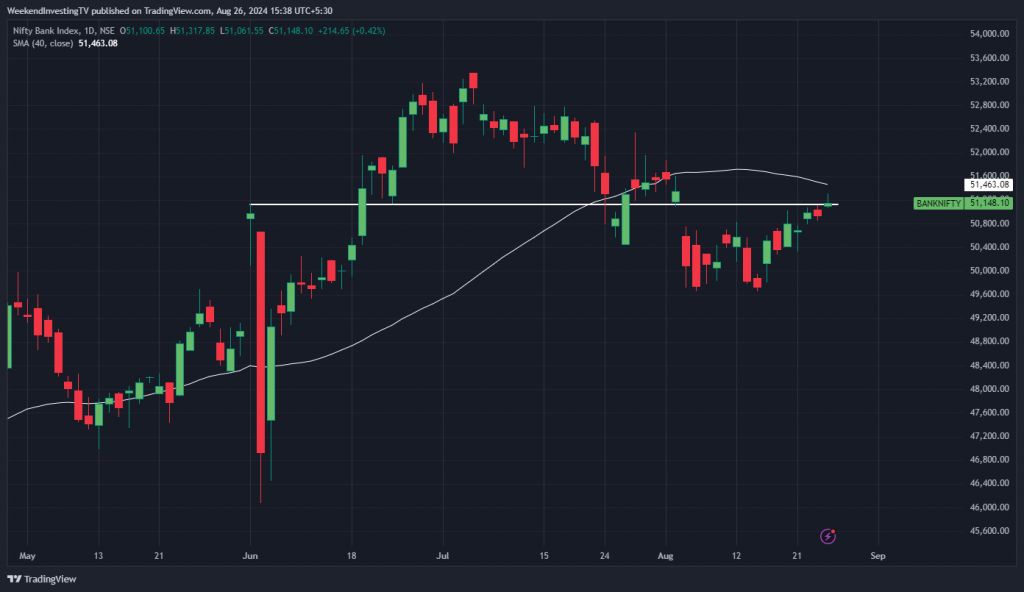
Momentum Trends
The advance-decline ratio was very flat today, with 283 advances versus 217 declines, better than Friday’s mostly declining trend.


Nifty Heatmap
ONGC, NTPC, HCL Tech, Bajaj Finserv, Reliance, HDFC Bank, ICICI Bank, Titan, Mahindra & Mahindra, Tata Consumers, LTIM, JSW Steel, and Hindalco all posted gains. Nifty saw no major losses, but Nifty Next 50 was a different story. Zydus Life lost 6%, with Adani stocks, LIC, IRFC, Ambuja Cement, and Zomato also losing ground. However, some FMCG stocks like Dabur, United Spirits, Marico, Colgate-Palmolive, and Godrej CP saw gains, as did metals and commodities with Jindal Steel and Vedanta.
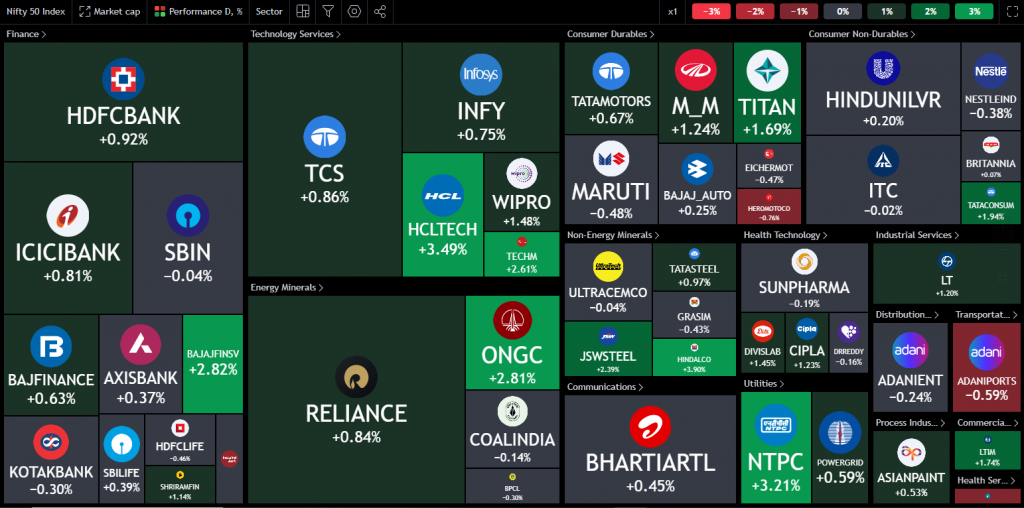
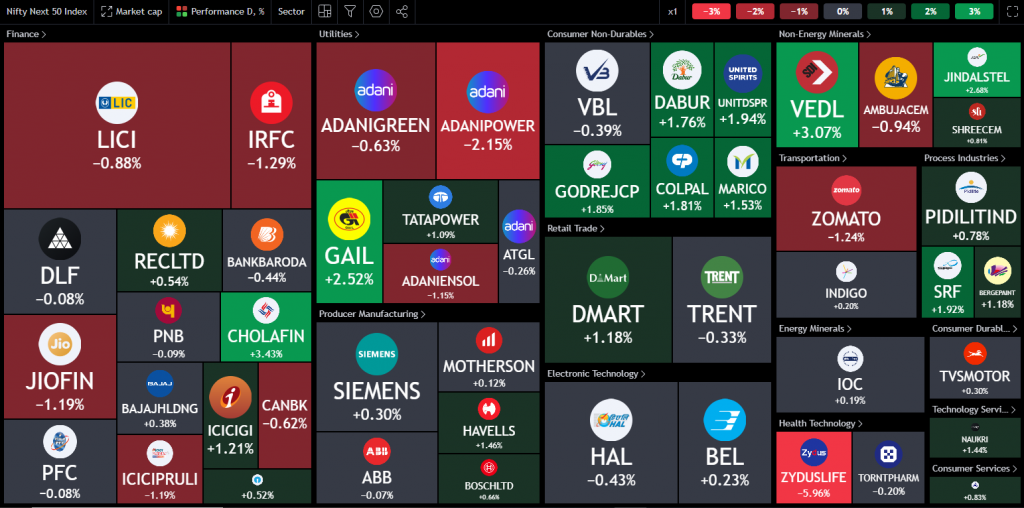
Sectoral Overview
Nifty Metals led the charge with a 2.2% gain, while real estate also made a comeback, reducing its monthly loss to -3.9% with a 1.8% gain today. Commodities were up by 1.1%, public sector enterprises by 1.1%, and so on. Pharma was flat, and PSU banks lost another half a percent, bringing their one-month loss to 4%, making them the biggest laggard in the market right now.
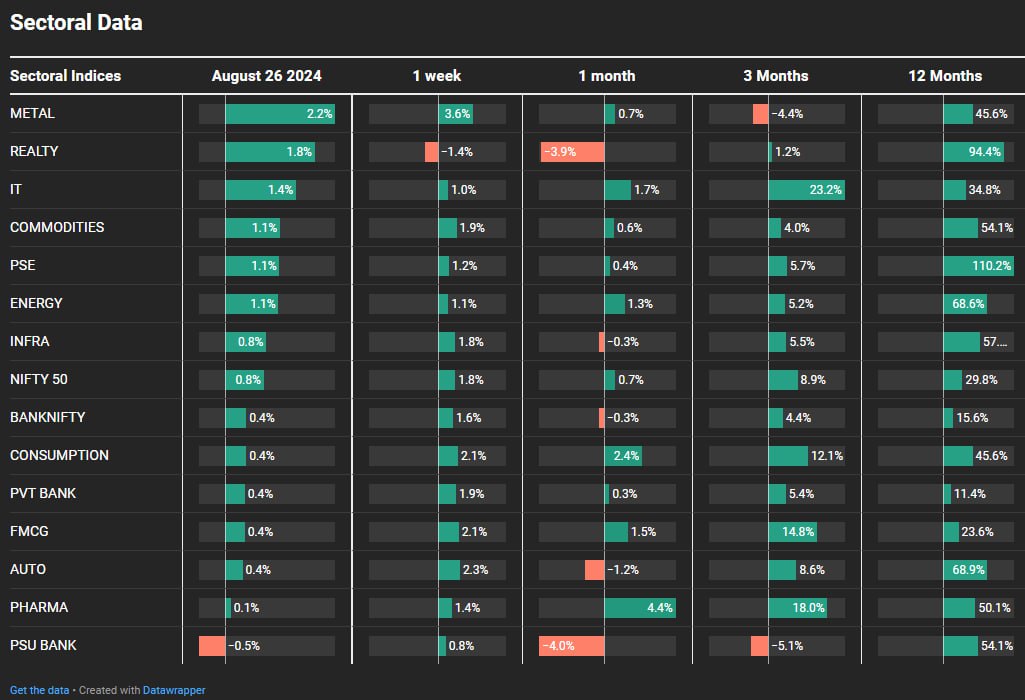
Sectors of the Day
Nifty Metal Index
Metals performed well, led by Nalco up 5%, Steel Authority up 4.5%, Hind Copper up 4.2%, Hindalco up 3.9%, and NMDC up 3.37%.
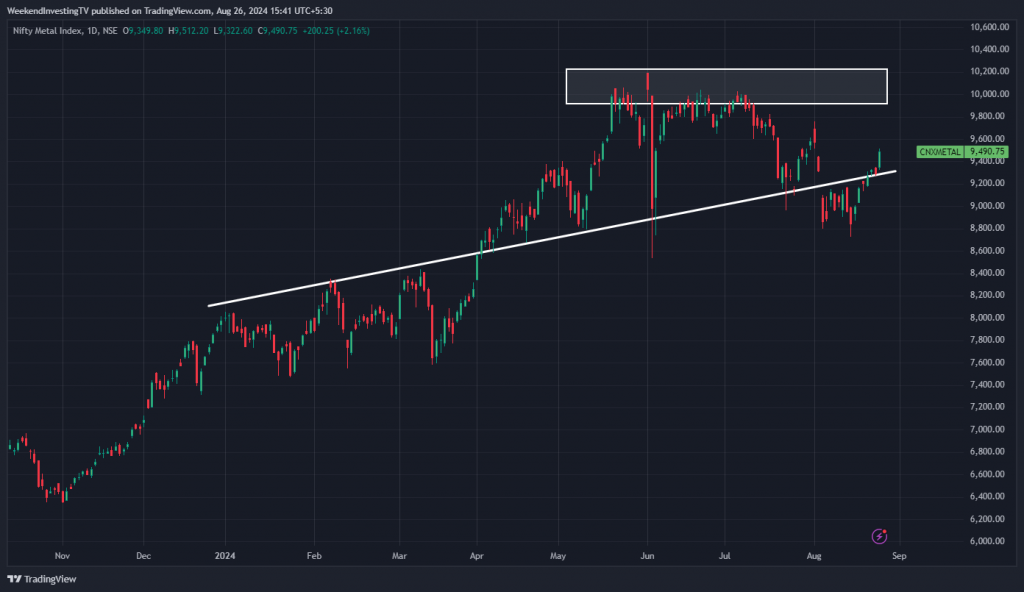
Stocks of the Day
JM Financial
Stock spotlight is on JM Financial, which surged 11.8% today, recovering well over the last three months from 65 to about 100. Although this stock has been a laggard since 2018, there could be an explosive rally if it crosses the 110-115 mark, but we’re still some distance away from that.
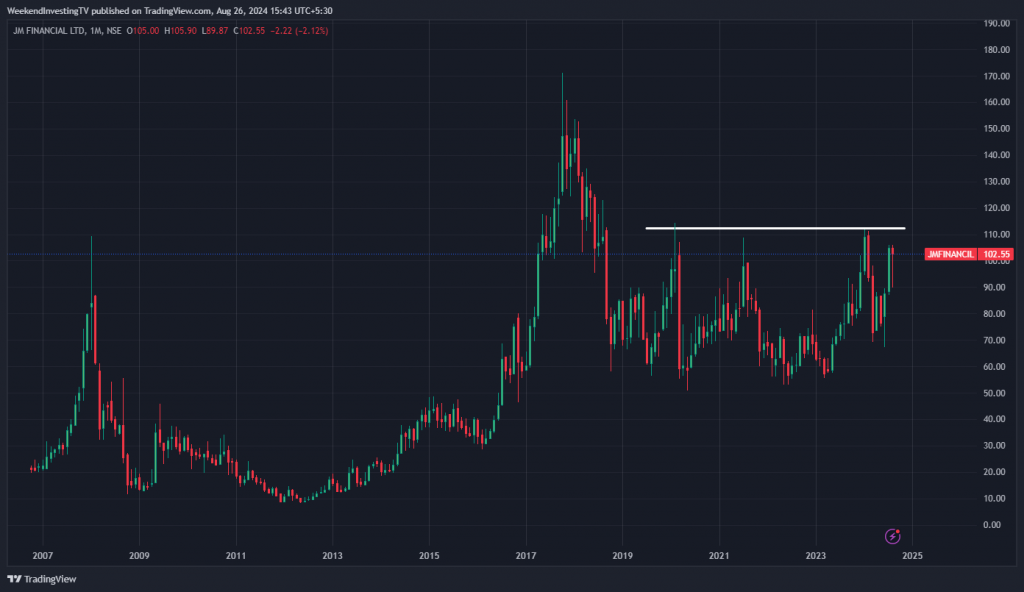
Story of the Day
Now, let’s talk about rate cuts and gold. Many asset classes, including gold, real estate, and stock markets, are impacted by changes in interest rates. What are rate cuts or hikes? They’re tools used by central banks to either cool off or stimulate the economy. Lower rates encourage borrowing, leading to more credit, capacity addition, and consumption. But as the economy heats up, inflation rises, and central banks hike rates to cool things down. Gold, as part of the monetary system, silently reacts to rate cuts in significant ways.
Gold acts as a safe haven during economic uncertainty, which often coincides with rate cuts. When rates are cut, it suggests that the economy is sluggish, and the government wants to encourage borrowing and risk-taking. People often turn to gold in uncertain times, whether due to economic downturns, wars, or other risks. With lower rates, high-yield assets like bonds become less attractive, making gold a more appealing investment.
Gold is also an inflation hedge, maintaining purchasing power over long periods. For example, 40-50 years ago, 1 gram of gold in Delhi could buy a five-star dinner plate, and today, it still holds that purchasing power, despite inflation. Rate cuts can lead to inflation, driving people towards gold to protect their wealth. Additionally, rate cuts often weaken the national currency, making gold cheaper for foreign investors and boosting demand. This is why central banks, despite rising rates over the past year and a half, have been steadily buying gold, leading to its rise in value.
One interesting observation is that the two-year yield often starts to fall before the actual rate cuts by the Federal Reserve, serving as a precursor to what happens with interest rates. Historically, whenever rates fall, gold tends to rise. We saw this in the past 24 years, and it’s likely we’ll see a similar trend if rate cuts are announced in mid-September. The likelihood is high that gold prices will rise significantly, especially since central banks are buying gold in large quantities.
This ongoing accumulation of gold by central banks worldwide suggests that there may be something on the horizon in the next 5-10 years that makes gold an essential asset to hold. For individual investors, minor allocations of 4-5% to 10% may be too small; significant allocations to gold should be considered, given the strong possibility of rising prices in the near future.
